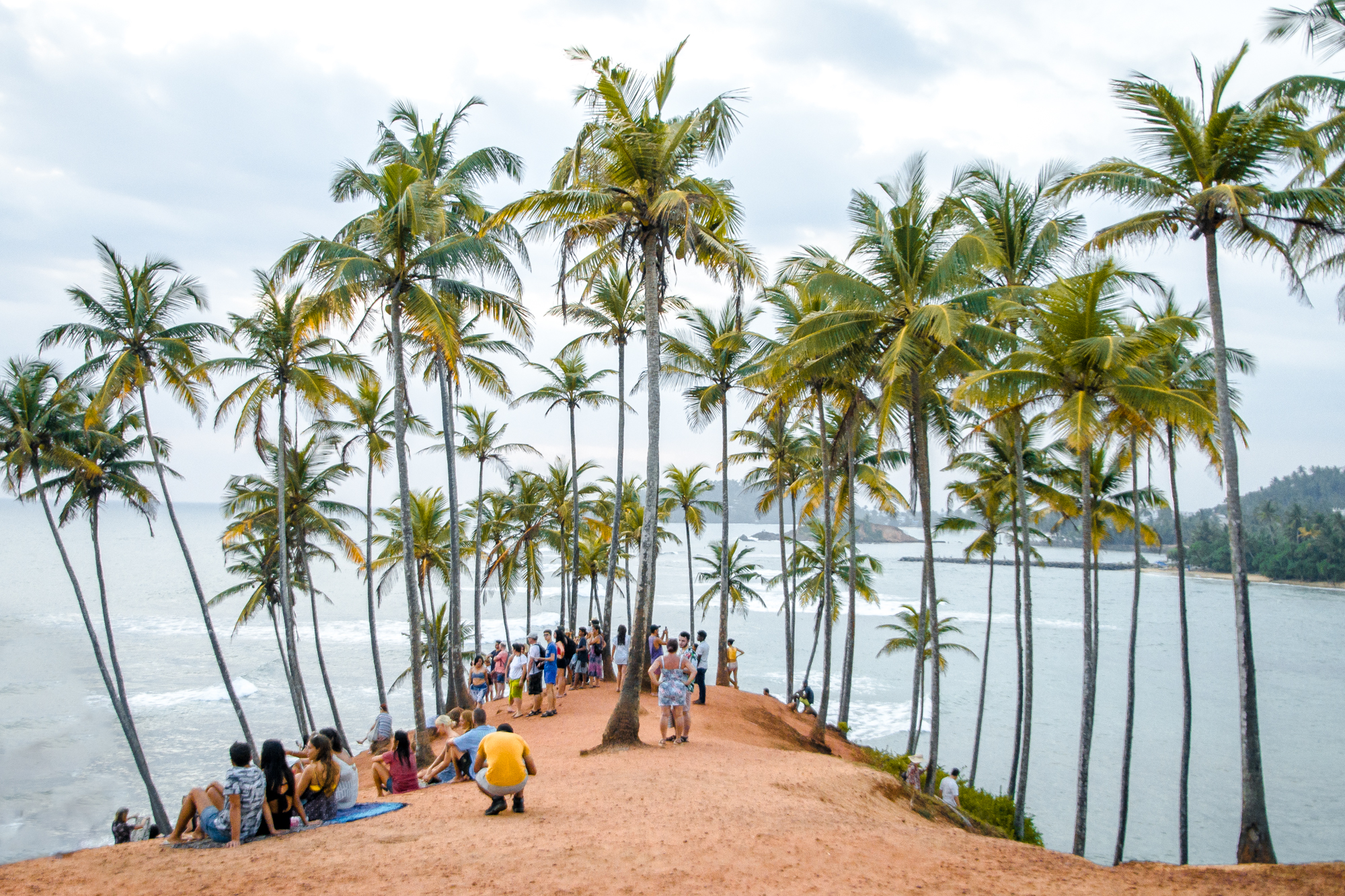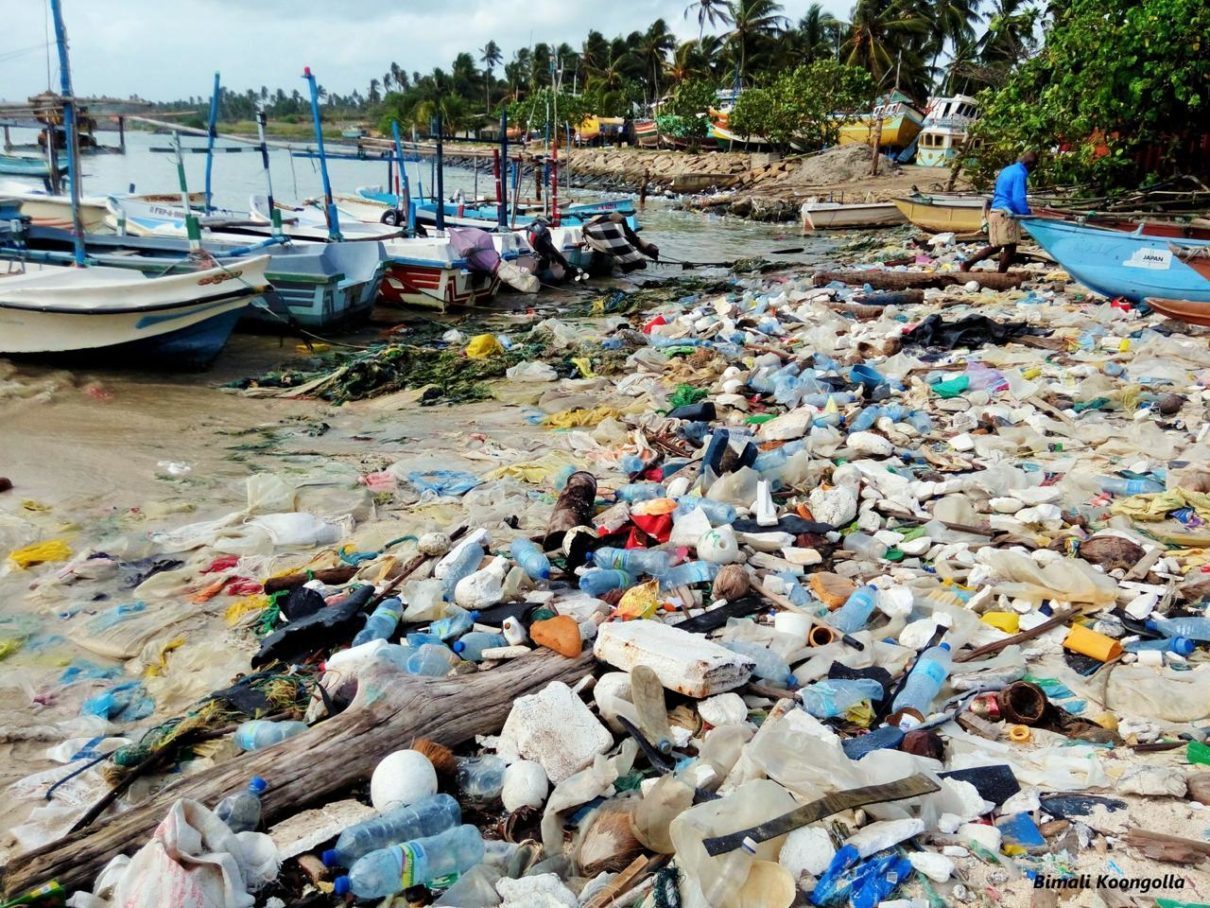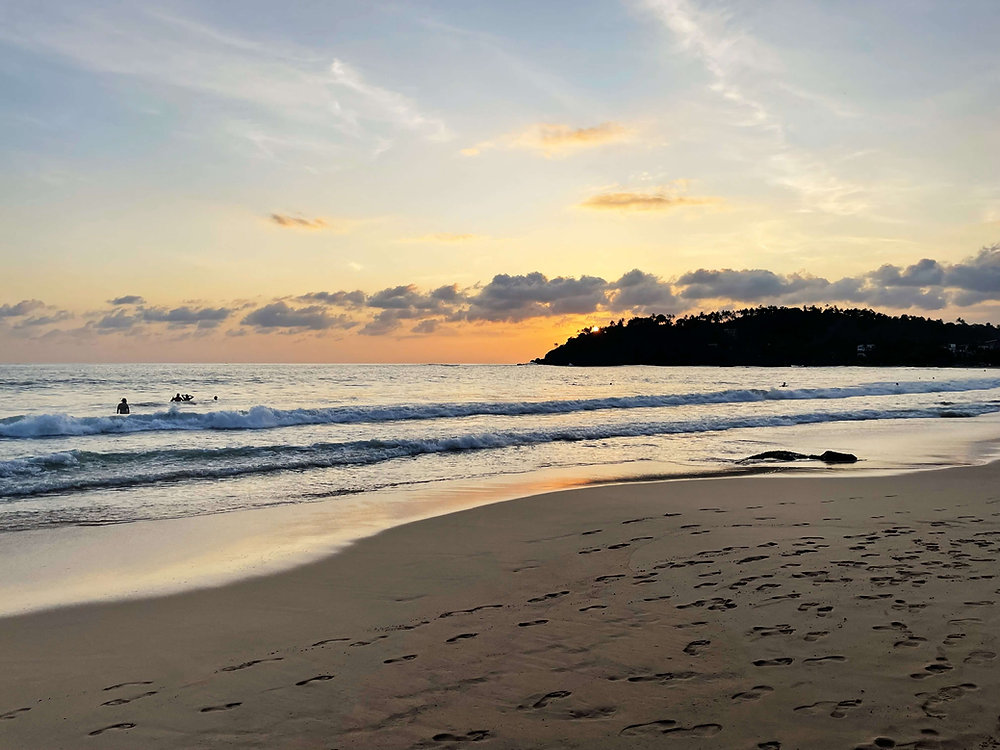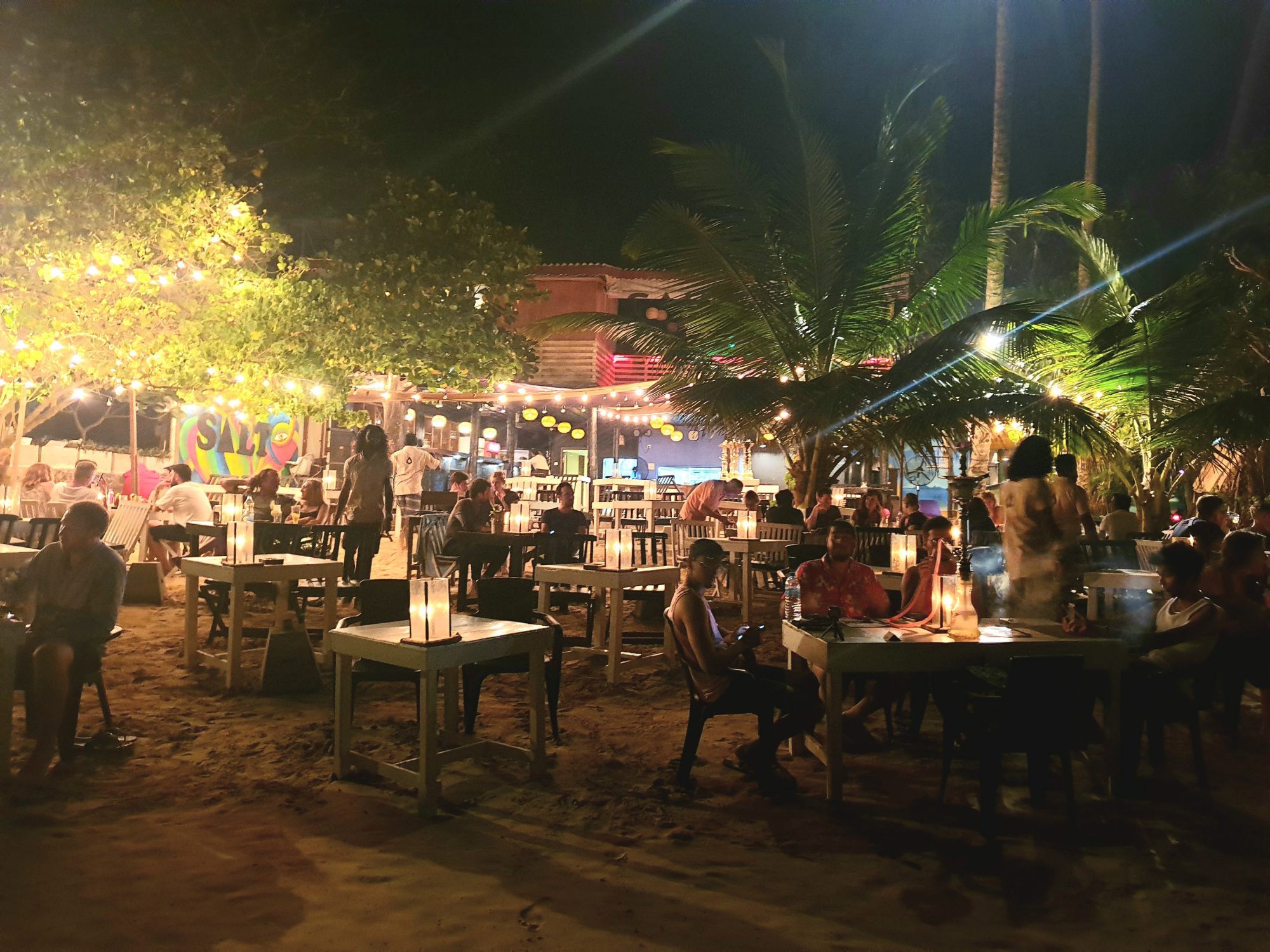Series:
Episode 1 – Common Tourist Issues – The Dark Side of Sigiriya
Episode 2 – Tourist Problems at Nine Arches Bridge & Little Adam’s Peak (And How to Solve Them)
Episode 3 – The Ultimate Guide to Tourist Issues at Mirissa Beach—and How to Avoid Them
Your complete survival kit for a smooth, safe, and unforgettable beach escape in Sri Lanka
Mirissa Beach, nestled along the southern coast of Sri Lanka, is a sun-drenched paradise. Known for its vibrant beach life, turquoise waters, and world-class whale watching, this coastal town attracts backpackers, surfers, and holidaymakers from across the globe.
But like many popular tourist destinations, Mirissa is not without its challenges.
While the palm-fringed coastline looks perfect on Instagram, visitors often encounter frustrating or unexpected problems: unregulated tour operators, safety concerns, price gouging, and overcrowded beaches. This in-depth guide will walk you through the common tourist issues in Mirissa Beach, and more importantly, offer practical solutions to make your tropical trip stress-free.
1. Overcrowding During Peak Seasons
The Problem:
Mirissa explodes with visitors during Sri Lanka’s high tourist season (December to March). The result? Packed beaches, long restaurant queues, loud beach parties, and fully booked accommodations.
The Solution:
- Visit in the shoulder seasons: November and April offer great weather with fewer tourists.
- Book early: Secure your stay and whale-watching tours in advance.
- Explore quieter areas: Try Secret Beach or Weligama for a more peaceful vibe.

2. Unsafe Swimming Conditions
The Problem:
Despite its beauty, the sea in Mirissa can be deceiving. Strong currents and high waves—especially during the monsoon months—can be dangerous. Lifeguards are limited, and warning signs are inconsistent.
The Solution:
- Swim in popular zones: Stay where others are swimming.
- Pay attention to beach flags: Red means stay out of the water.
- Ask locals: Café staff or tuk-tuk drivers often know the safest spots.
3. Whale Watching Scams and Irresponsible Operators
The Problem:
Whale watching is one of Mirissa’s biggest draws. But many operators ignore safety rules, overcrowd boats, and chase whales aggressively. Others cancel tours due to weather but refuse refunds.
The Solution:
- Use responsible companies: Look for eco-certifications or TripAdvisor “Green Leaders.”
- Read honest reviews: Avoid vendors with vague tour details or no cancellation policy.
- Book through hotels or vetted travel apps, not street vendors.
4. Inflated Prices and Hidden Charges
The Problem:
Foreigners often face higher prices for tuk-tuks, food, and souvenirs. Some restaurants add hidden service charges after the meal.
The Solution:
- Confirm tuk-tuk fares before the ride.
- Ask if taxes and service charges are included before ordering food.
- Use ride apps like PickMe or Uber, available in parts of the south.
5. Poor Waste Management
The Problem:
Plastic bottles, wrappers, and cigarette butts litter the beach, especially after beach parties.
The Solution:
- Join or support beach clean-ups—many hostels organize them weekly.
- Bring a reusable water bottle and bag to reduce plastic waste.
- Support eco-conscious cafés that ban plastic straws and use compostable packaging.

6. Lack of Tourist Information
The Problem:
No central tourist information office exists in Mirissa, and many tuk-tuk drivers or staff don’t have up-to-date info.
The Solution:
- Join Facebook groups or forums like “Backpacking Sri Lanka.”
- Talk to travelers in your hostel or hotel.
- Use offline travel apps like Triposo or the Lonely Planet app.
7. Limited ATM Access and Card Refusals
The Problem:
ATMs often run out of cash during weekends or holidays. Some shops and restaurants advertise card acceptance but “suddenly” claim the machine is broken.
The Solution:
- Withdraw cash in Matara or Galle, 15–20 minutes away.
- Always carry backup cash, especially for tuk-tuks.
- Ask about card payments before ordering.
8. Language Barriers
The Problem:
Though English is common in tourist spots, communication can be difficult with tuk-tuk drivers or in rural areas.
The Solution:
- Download Sinhala offline on Google Translate.
- Learn basic phrases like “hello,” “how much?” and “thank you.”
- Use gestures and patience—locals appreciate the effort.
9. No Public Toilets or Changing Areas
The Problem:
Mirissa Beach lacks clean, dedicated public toilets or changing rooms. Tourists often rely on café restrooms.
The Solution:
- Use restrooms at cafés or restaurants where you’re a customer.
- Change at your hotel or guesthouse before arriving.
- Carry wipes and sanitizer just in case.
10. Monsoon Season Disruptions
The Problem:
Monsoons (May to September, and again October–November) bring heavy rains and rough seas. Expect power cuts, canceled tours, and beach closures.
The Solution:
- Travel between December and April for the best weather.
- Check the weather forecast daily before planning boat trips.
- Book accommodations and tours with flexible cancellation policies.

11. Weak Internet and Power Cuts
The Problem:
Many accommodations have unreliable Wi-Fi, especially during bad weather or rolling blackouts.
The Solution:
- Buy a local SIM card (Dialog or Mobitel) for strong 4G data.
- Download offline content (maps, translations, reading).
- Use cafés known for good Wi-Fi—check Google reviews.
12. Street Dogs and Monkeys
The Problem:
Street dogs can bark, follow you, or act unpredictably. Monkeys can snatch food or personal items.
The Solution:
- Don’t feed animals, which encourages aggression.
- Keep your snacks and valuables hidden.
- Avoid touching or approaching animals, especially with children.
13. Health Risks and Medical Limitations
The Problem:
Tourists can face food poisoning, heatstroke, or minor injuries. Medical facilities in Mirissa are basic.
The Solution:
- Only drink bottled or filtered water.
- Eat at popular, well-reviewed places.
- Travel with essentials: paracetamol, Imodium, rehydration salts, sunscreen.
- Know the nearest hospital (Matara or Galle) and have travel insurance.
14. Noise from Beach Parties
The Problem:
Mirissa is known for nightlife, but loud music from beachfront bars can go on till 2–3 AM. This disturbs those staying near the shore.
The Solution:
- Book accommodation away from Parrot Rock or the beach strip.
- Read reviews that mention noise levels.
- Pack earplugs or use a white-noise app.

Bonus Tips: How to Get the Best Out of Mirissa
- Sunrise at Parrot Rock: Climb early before crowds arrive. It’s slippery, so wear proper shoes.
- Try traditional Sri Lankan breakfasts: Hoppers, roti, dhal, and sambol—much cheaper than western fare.
- Take a surfing lesson in Weligama: Just 10 minutes away and great for beginners.
- Walk the railway tracks to explore inland: Respect train timings and walk carefully.
- Catch a stilt fisherman photo opportunity in nearby Koggala.
Final Thoughts: Love Mirissa, Travel Smart
Mirissa is a magical beach destination that blends relaxation, adventure, and cultural charm. But, like any popular spot, it’s important to be aware of its tourism growing pains.
By understanding the common issues and preparing accordingly, you can avoid the frustrations that trap many first-time visitors—and focus on enjoying the whale sightings, stunning sunsets, spicy street food, and chill beach life that Mirissa is famous for.
Have You Been to Mirissa?
Share your tips, mistakes, or favorite finds in the comments. Your advice could help other travelers experience Mirissa the right way.



